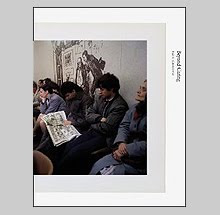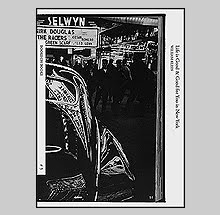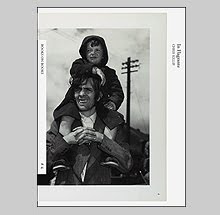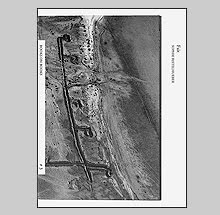Wounded Cities by Leo Rubinfien

The question of "Where were you?" in regard to the attacks of 9/11 was one of those small ways for people around the world to connect during that dark period.
I was in the middle of a nap in Backi Jarak, Vojvodina, a small town about twenty minutes from Novi Sad. I heard my girlfriend's mother come into the room and switch on the television. I opened my eyes and saw her pointing at the TV and smiling - smiling the same smile she always wore. My immediate thought was that she somehow had instinctively known that at that moment I wanted to watch TV and by doing me a favor, she was being a good host. It took a moment of letting my eyes focus on the screen until I saw plumes of smoke through the snow of the bad reception.
Later that evening over supper my girlfriend's brother was giddy over the attack. He loved what he interpreted as a time for 'payback' for the 78 days of bombing his family experienced in Novi Sad while the US and NATO punished the Serbs over Kosovo. He told me stories of trying to keep his wife calm and quieting their two children while the not-too-distant thumping took out bridges, radio stations and other infrastructure just across the Danube. 'Now you have an idea of what it's like?' he kept asking.
I returned to New York and found the city still in a daze. People shuffled around lower Manhattan with their heads filled with chaotic thoughts and questions desperate to make sense of what the experts referred to as 'a new era.' I walked among them feeling disconnected, like I hadn't experienced what they did. I certainly didn't. I was half a world away listening to newscasts in Serbo-Croatian blurred by static.
Leo Rubinfien was in New York on 9/11, settling into a new apartment whose triangular terrace points directly where the towers stood, two short blocks away. His new book Wounded Cities published by Steidl explores, not the physical, but the psychic wounds that remain long after moments of trauma.
Rubinfien's is a global story. For over five years, he travelled to cities around the world that had recently suffered from various terrorist attacks. Although centered around 9/11, because that event was his immediate experience, he identifies that the personal psychological aftereffects are just as devastating for the participants in any attack, large or small, whether in London, Moscow, Istanbul, Nairobi or Buenos Aires.
Working in the traditions of the street and mostly capturing his subjects unaware, he created fleeting portraits of passersby that allude to the shock and inner psyche of his subjects. These photos describe the moments when we are deepest within ourselves trying to make sense of the world in our new role as emotional 'witnesses' to these events even if not experienced firsthand. Thought and the search for rationale become last order of self-protection we can achieve.
Much of the artistry of Wounded Cities comes through the text. Rubinfien is a writer whose grace and clarity is found on every page. This is a memoir that acts as his form of therapy, a way to reflect upon all of the new questions raised by the attacks and bounce them off of his rich personal history and experience. Shaped to jump from the present to the past, across continents, into politics and back to family, he creates a complex page turner (a quality rarely found in a photobook text) that reflects his intelligence and vast understanding of different cultures. Rubinfien is truly someone who is at home in the world and his story is a refreshing antidote to the daily dose of xenophobia the news tends to bring in this new era. Wounded Cities is a tribute to humankind that deservedly avoids easy conclusions by not contracting the dialogue of recent terror but expanding it.
The design and construction of Wounded Cities also makes it an interesting contribution to book craft. Employing many foldouts for the images, its construction avoids a quick scan. It is a book that draws your attention to the text while the photographic foldouts slow the pace, giving the images a chance to sink in. Due to that pacing, small details in the images start to take on additional meaning. The faces we immediately focus upon eventually give way to other discoveries; the stiffness of a shirt, a necklace charm, the printed pattern of a piece of fabric, or perhaps the most remarkable in all of its simplicity, a lapel button hole.
Many books have been published which address the tragedies of terrorism, most having to do with 9/11 and they often touch upon the subject in very similar ways. By using his own experience of that day as a starting point, Rubinfien takes us on a more complex journey within which we revisit our own experiences - experiences that are to this day perhaps still filled with more questions than answers.





























